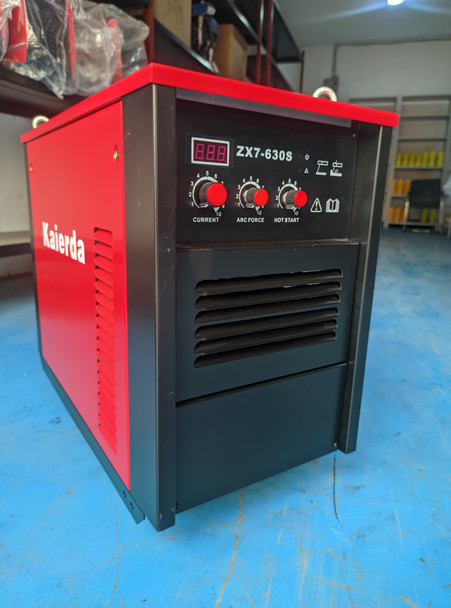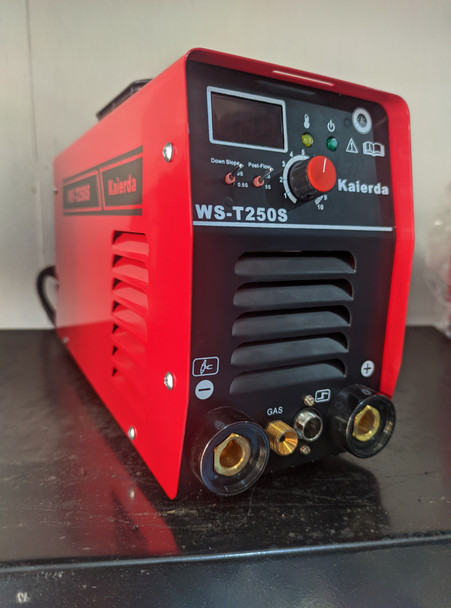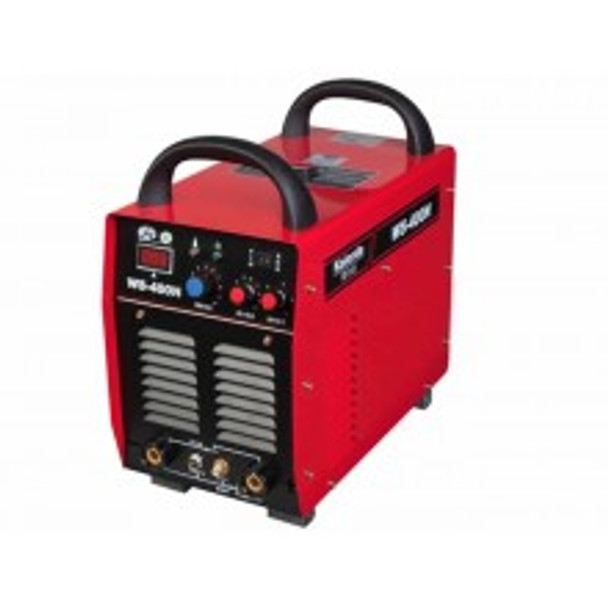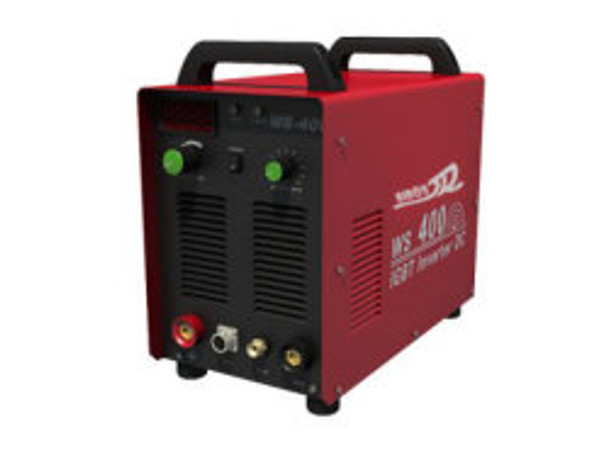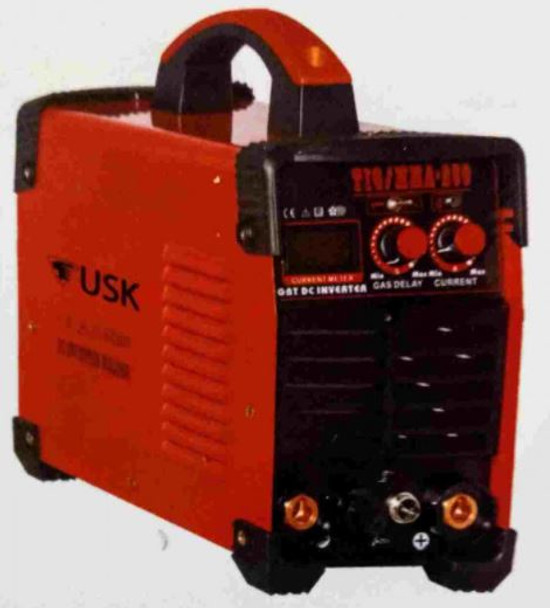Understanding TIG vs MIG welding machines: A comprehensive guide
The use of arc welding machines such as TIG and MIG welding machines over the last five decades has revolutionized Welding technology such as metalworking and fabrication. TIG and MIG welding processes has become one of the primary assembly operations in production/manufacturing plants where metal panels are assembled and the main reason for this is the simplicity of their process though they differ, when using TIG welding machines filler metal are not used if the thickness of the material is above 2 mm but filler metals are used for MIG welding. As a welder knowing the types of welding machines whether MIG or TIG welding machines is very much needed and it would be very useful in your professional life. Suppose you have to join two parts together and you are well aware of all the welding process, you would be able to decide the best economical and applicable welding method. At the same time in some cases you would have workpieces which can not be welded by all welding processes for example when welding stainless steel, you should not use Shielded metal arc welding, instead MIG or TIG welding is recommended.
Kaierda Inverter Manual Arc Welding Machine (ZX7-630S)
According to Duane Lang on Quora, "If you don't know the different types of welding machines then you don't know what's acceptable and what's not acceptable for each welding process. You would spend a month tig welding a trailer when you can MIG in a couple of days, each process has advantages and disadvantages learning each one will allow you to be a better welder." This underscores the importance of knowing about different welding methods to help you become a more efficient and effective welder.
If you're interested in learning more about the benefits of studying types of welding. This is an important thread in quora to learn from. Where industry experts and welding enthusiasts share their insights and experiences. It's a great resource to learn more about welding techniques and how to become a better welder.
Before we dive into the major differences between TIG and MIG welding machines, Welding is a process of joining two metal pieces due to significant diffusion of the atoms of the welded pieces into the joint (weld) region. Welding is carried out by heating the joined pieces to the melting point and fusing them together (with or without filler material) or by applying pressure to the pieces in a cold or heated state. Welding machines are essential in the TIG and MIG welding process and choosing the right one makes a significant difference in the success of your fabrication process, while they serve similar purposes such as easy to operate and achieves accurate welding at the same time, there are significant differences between the two that every welder should know before making the purchase of either TIG welding machines or Mig welding machines.
Maxmech Inverter Welding Machine TIG/MMA-400
Understanding TIG welding machines
Tungsten Inert Gas welding is known as TIG welding wherein reactive metal such as magnesium and aluminum are welded together. The process of joining is done manually and with this process, various types of joins such as corner joining, butt joining, lapping, or t-joints are achieved. While using TIG welding machines, the prevention of oxidation is of paramount importance. It requires a non-consumable tungsten electrode and separate filling material. The arc is built between the pointed tungsten electrodes and the part that is to be joined. As it uses gas shield, the weld is quite fine and clear. For shield, inert gases are applied. The thin metal can be welded pretty well using such type of joining. Such a process is used to weld aluminum, brass, titanium, magnesium alloys, and steels and coppers.
In TIG welding, a tungsten electrode heats the metal you are welding and gas (most commonly Argon) protects the weld puddle from airborne contaminants. TIG welding produces clean, precise welds on any metal.
- TIG welding uses a non-consumable tungsten
- Filler metal, when required, is added by hand
- Shielding gas protects the weld and tungsten
- Produces high quality, clean welds
- Welds more metals than any other process certainly stainless steel and aluminium, as we have just seen, but also iron.
The rods are used to give the joint the filler material. Welding aluminium using TIG always requires the use of both. Same with iron. The only exception is the third material. To TIG-weld stainless steel, you can just use the electrode without the rods. When? If you have two thin workpieces, then you can also do without the filler material (the rod). If, instead, you are welding thick workpieces and your project needs a robust structure, then you’ll need rods.
Advantages of TIG welding machine
1. Weld more metals and alloys than any other process
TIG welders can be used to weld steel, stainless steel, chromoly, aluminum, nickel alloys, magnesium, copper, brass, bronze, and even gold. TIG is a useful welding process for welding wagons, bike frames, lawn mowers, door handles, fenders, and more. It sis useful for build and repair, automotive industries and art designs.
2. Create high quality, clean welds
With superior arc and weld puddle control, TIG allows you to create clean welds when appearances count. Because the heat input is often controlled by pressing on a foot pedal, similar to driving a car, TIG welding allows you to heat up or cool down the weld puddle giving you precise weld bead control. This makes TIG welding ideal for cosmetic welds like sculptures and automotive welds.
a) No sparks or spatter
Because only the necessary amount of filler metal is added to the welding puddle, no spatter or sparks are produced (if the metal being welded is clean).
b) No flux or slag
Because the Argon gas protects the weld puddle from contamination, no flux is required or used in TIG welding and there is no slag to block your view of the weld puddle. Also, the finished weld will not have slag to remove between weld passes.
c) No smoke or fumes
TIG welding does not create smoke or fumes, unless the base metal being welded contains contaminants or elements such as, oil, grease, paint, lead or zinc. The base metal should be cleaned before welding.
3. Use one shielding gas (Argon) for all applications
Because Argon can be used to TIG weld all metals and thicknesses you only need one type of gas in your shop to handle all of your welding projects.
Argon gas is typically used for most TIG welding applications
4. Weld in all positionsTIG welds can be made in all positions - flat, horizontal, vertical or overhead. Perfect for roll cages and inside confined areas. |
Disadvantages of TIG welding machine
1. A high degree of operator skill is required to produce quality welds
Process is not easily automated
2. TIG is a time-consuming process - They are slower than any other welding process. Lower filler deposition rate.
3. Safety issue - Welders, are exposed to high intensity of light which can cause eye damage and thats why we recommend eye protection equipments
4.High initial cost.
5.It cannot use in thicker sheets of metal.
Understanding MIG welding machine
MIG welding is the short form of Metal Inert Gas welding wherein the metal arc welding or GMAW are also two names applied to it. This process is applied to stick aluminum with non-iron metals. There is quite a tiny splatter available for this type of weld. It is known for its swift process as compared to other legacy systems such as stick welding process. In this process, constant, consumable wire electrodes shielding gases are filled with welding guns. A continuous power supply is essential for welding aluminum or steel. Such type of welding is chiefly utilized in sheet metals joining. As far as industries are concerned, this process is widely used in automobile sector. The instruments needed include a gun for welding, wire feeding units, shield supply of gases, and electrode wires.
The MIG welding machine for welding and fabrication
Advantages of MIG welding machine
1. MIG Welding is Fast
The time required for any welding must represent the difficulty of the join as well as the quality wanted from the finished weld. But, all things being equal, if you put MIG welding up against the other popular forms of welding, MIG is going to win most of the time – whether in the hands of a welding novice or a seasoned fabrication specialist. Why? The answer lies primarily in the continuously-fed electrode, which may be fed from the welding machine, from a spool-gun MIG torch, or in sophisticated industrial applications, through a combination of push and pull feed technology.
2. Ease Of Use
One day, we’ll find out just how easy MIG welding is for a complete novice when we set our copywriter loose on some gash plate with one of our machines. He had a go at oxyfuel welding about 40 years ago, so if anyone counts as a novice, it’s probably Al. Watch out for the video and blog post in future.
But seriously, the one-handed operation of the MIG torch and the automation of several other aspects, make MIG welding easier to learn and gain proficiency with than, say, TIG welding or stick welding.
3. MIG Weld Quality
Put simply, all things being equal, MIG welding allows you to quickly make very high-quality welds – often faster than other welding techniques. As we’ll mention again later, MIG is flux-free, so there’s no chance of entrapping slag in the weld. Result? Great welds and fast.
4. Long-Pass Welding
Here’s another reason why MIG scores for speed. You’re able to deposit more weld metal with each pass of the MIG torch. Maybe that’s less of an advantage on a small weld, but when you have a long, complex weld to make, you can get the job done with fewer passes – which saves time, helps you work more efficiently and (if you’re a welding professional) helps you work more profitably. That’s definitely good.
5. Penetration Matters
Of course it does, and with MIG you can get great penetration (the depth of your weld) and be sure of a strong, smooth, bead. Best of all, you can achieve this on a wide range of metals with differing thicknesses. Aluminium? No problem. Mild steel? A cinch? Magnesium? No worries. All you have to do is get your head around setting the correct current (Amperage) for the wire and the metal and great penetration will follow.
6. Fewer Stops And Starts
That continuously-fed MIG electrode scores again when it comes to cutting down the number of times you have to stop and start welding during a job. With stick welding, or even TIG, you’ll be stopping and starting as if you are in rush-hour traffic. What’s more, there will inevitably be adjustments to make and new electrodes to fit before you can re-start that weld. Just like the difference between trying to get to a job at peak time and making the same journey early in the morning, it all adds up. Try it and you’ll see what we mean.
7. Electrode Stub Loss? What’s That?
If you’ve ever tried stick welding, you’ll know that no matter how skilled you are, you end up wasting several centimetres of each welding stick. It’s called stub loss, but it’s a term you can banish from your welding vocabulary with MIG welding. That’s because you can use all your continuously-fed electrode. That’s more time and money saved!
8. MIG Works With Many Metals Or Alloys
It’s true. Remember how MIG was originally developed for aluminium and magnesium alloys used in Californian aircraft factories? That same versatility means that MIG works a treat with alloys, stainless steel, aluminium and mild steel alike. A wide range of filler materials means increased precision when matching filler to the workpiece metal or alloy.
9. MIG Welding Is Clean
Okay, so maybe TIG welding is the ‘King of Clean’ when it comes to electric arc welding, but MIG isn’t that far behind and it makes traditional stick welding look positively ‘scuzzy’.
It’s true. Unlike stick welding, which is renowned for the flux involved and the amount of slag generated, MIG welding is really rather mess-free. Because there’s no flux, you can’t trap slag in your weld – it’s another key to those high-quality welds we mentioned earlier.
What’s more, because you’ve got that protective gas shield (typically argon or an argon mix), there’s minimal loss of alloying elements – and the tiniest amount of weld spattering.
That’s good, right? Less clean-up time, neater jobs, faster, and more productivity. Result!
If you’re a seasoned MIG welding pro, none of this will surprise you. But if you’re a welding newbie, it should be reassuring. But surely there’s a catch? There’s always a catch, right?
Okay, like most things in life, there are two sides to MIG and we’d be remiss if we didn’t flag up the known limitations of this welding method.
Kaierda Inverter TIG/MMA Welding Machine WS-T250S
Disadvantages Of MIG Welding
1. MIG Welding Costs More (To Set Up)
High-quality MIG welding machines cost more compared to other types of welding equipment. In addition, with most higher-end MIG welding machines, you can perform additional functions such as tungsten inert gas (TIG) welding, stick welding, and even plasma cutting.
2. Burn-Throughs And Undercutting
MIG welding machines use a constant voltage output, which makes them susceptible to burn-throughs and undercutting.
Burn-through is the penetration of the material’s surface during thin materials welding. Undercutting occurs when tungsten is not properly shielded from the purge gas, resulting in an unmelted electrode.
Undercuts are usually seen on the underside of the material, but they could potentially occur on both sides.
3. Hot Spots And Distortion
Since MIG uses a constant voltage output, there is no fluctuation in output which can lead to hot spots on your welds. This can result in warping, distortion, and even cracking of the welding puddle.
4. Not Best For A Windy Environment
MIG welding requires a constant gas flow to produce a smooth and consistent weld. Wind, rain, and other adverse weather conditions can interfere with the gas flow and affect your MIG welding results. In this situation, you should opt for flux-cored arc welding (FCAW) or stick welding.
5. Frequent Gas Changes Are Required
Since MIG uses a continuous wire feed, you will need to change the shielding gas frequently while welding to avoid contamination of the weld pool. This is also one of the reasons why MIG equipment costs more.
6. Limited Positions
Vertical or overhead welding is not possible due to the fluidity of the welding puddle and the high heat input of a MIG welder.
If your welding doesn’t require any of the above positions, this is probably not that big a deal for you.
7. More Maintenance Required
The MIG welding machine is more complex compared to others such as stick welder so you will need to perform some routine maintenance tasks.
This includes cleaning the gun, checking the wire spool, changing the gas, replacing contact tips and nozzles, and ensuring that your MIG machine operates optimally.
8. Fast Cooling Of Weld Pool
Since welds are clean and not covered in slag, they cool fast during welding, resulting in thicker and wider weld beads.
This means that you will need to increase the wire feed speed, which also results in excessive spatter, a leading cause of weld contamination.
9. Not Appropriate For Thick Metals
While MIG welding is suitable for thin materials, it cannot be used on thicker metals because of the high heat input.
If you need to weld thick metals, you should consider other options such as FCAW, submerged arc welding (SAW), or GTAW.
Kaierda Tig Welding machine WS400N
Uses of TIG/MIG welding machines
1. When to use MIG:
- Thicker materials – MIG is better suited for joining thicker stock
- Long runs – The continuous wire feed of MIG welding means that it is better for longer runs, needing to stop and start less often to replace the filler material than with TIG welding, which means less chance of weld defects
- Difficult positions – MIG is easier to use in difficult positions as it only requires the use of one hand
- High productivity – MIG welding is better suited to high levels of productivity than TIG welding, which is a slower process
- Less experienced welders – MIG is easier to learn than TIG, so is better suited to less experienced welders
2. When to use TIG:
- Thinner materials – The precision and accuracy of TIG welding means that it is ideal for joining thin materials that may be susceptible to burn through or warping
- Short runs – TIG welding is best suited to short runs
- Shop or bench work – TIG is not an easy process to manage when out of position, so the best results are achieved in bench or shop work
- Delicate or fine work – TIG welding is preferred when the look of the final weld is important. Visible pieces such as automotive restoration or artwork will look better with TIG welding, while the process also allows for better control to prevent warping or burning
- Non-ferrous metals – Experienced welders will tend to turn to TIG welding for aluminium, copper, stainless steel and other exotic metals
- Experienced welders – All of the advantages of TIG welding depend on having an experienced welder, without which it is better to opt for a simpler method, such as MIG welding
Distinctive differences between TIG/MIG Welding machines
We have already mentioned some of the differences between MIG and TIG welding processes. MIG is generally seen as being easier to learn and perform as well as being faster and better for welding thick materials. However, TIG welding offers greater control and precision, is better for thinner materials and offers neater welds with little finishing required.
Aside from these general differences, there are a number of key differences that can be categorised according to different properties, cost, ease of learning, and more:
|
Benefit |
MI G | TIG |
| Welding Speed | √ | X |
| Welding Costs | √ | X |
| Ease of Welding | √ | X |
| Strength of Welds | X | √ |
| Weld Precision | X | √ |
| Weld Aesthetics | X | √ |
| Thick Materials | √ | X |
| Thin Materials | X | √ |
1. Weld Strength
TIG welded joins are typically stronger than those produced by MIG welding. This is because the narrow, focused arc created by TIG welders offers better penetration of the metal. In addition, the TIG weld beads, when applied correctly, contain few holes and other defects that can weaken the weld. Despite this generalisation, MIG welds can still produce strong welds with good penetration by grinding or cutting a V-shaped groove into the joint before starting to weld to increase penetration. Good travel speed and torch positioning will also improve the weld strength of MIG welds.
2. Weld Speed
MIG welders typically provide faster welding speeds in a production setting.This is because air-cooled MIG welders auomatically feed filler material into the weld pool and have a rounder and broader arc that dissipates heat better. This allows welders to move the weld puddle faster and make longer runs without overheating.By contrast, TIG welders cannot move the weld puddle as fast or supply enough filler rod to compete with MIG welding speeds. In addition, the air-cooled torches used in TIG welding get too hot during lengthy welding runs, meaning they need to cool or be swapped for more expensive water-cooled torches.
3. Shielding Gas
Both MIG and TIG welding use a shielding gas ensure quality welds. The shielding gas protects the weld puddle from reactive gases found in the air that can cause impurities in the weld. TIG welds typically use pure argon gas to protect the weld as the tungsten electrode is more sensitive to reactive gases like oxygen or CO2. MIG welds are typically performed with a blend of argon and CO2 (typically 75/25%), as the small addition of carbon dioxide stabilises the arc and aids penetration. There are exceptions to these general shielding gas rules, depending on the application. TIG welding may sometimes use a blend of argon with helium, hydrogen or nitrogen, while MIG welding is performed with 100% pure argon when welding aluminium and can be performed with pure CO2 to save costs and increase weld penetration. The two techniques also use different shielding gas flow rates, with MIG typically using 35 to 50 cubic feet per hour and TIG welding operating a shielding gas flow of 15 to 25 cubic feet per hour.
4. Weld Aesthetics
TIG welds tend to show better aesthetic qualities than MIG welds. With very little or no spatter, TIG welds usually only require light polishing to finish and remove any discolouration. TIG welded stacks of ‘coins’ are often seen as the most aesthetically-pleasing weld and can serve to make unpainted welds (in steel or aluminium, for example) look their best. By contrast, MIG welds have a less desirable appearance, even though an experienced welder can still create good-looking MIG weld beads. Despite the aesthetic differences, MIG welds are often fine for applications where appearance is less important or where the welds are to be coated, covering the appearance of the joint.
5. Process Difficulty
MIG welding is much easier to learn and master than TIG welding. TIG welding requires the use of two hands, one to move the welding torch and the other to feed the filler rod into the weld pool. Plus, there is often a foot pedal with which you can control the amperage. While these various movements allow for greater control, they can be difficult to master. The metals to be joined must also be cleaned and prepared well for TIG welds and welders tend to consider TIG as a more advanced process. MIG welding, by contrast, is much easier to learn. There is no foot pedal to master and the filler material is automatically fed through the welding gun, meaning that you only need to use one hand to complete the weld.
6. Cost
TIG welding costs more per foot of bead than MIG welding. This is due to the lower deposition rates associated with TIG as well as the need for more experienced, and thereby more expensive, welders. In addition, TIG welding requires more prep work, which also adds to the cost. Finally, MIG welding supplies and machines tend to be less expensive than TIG. All of these factors combine to make TIG welding more expensive than MIG welding.
WS-400 ARC/TIG KAIERDA ARGON WELDING MACHINE
Which welding machine is right for you
The type of welder you purchase should be suited for the specific functions you require as well as the projects you will work on the most. Think about your end goal and consider opportunities to expand the usefulness of your welder.
Choosing the right welder comes down to finding what machine fits your needs. The five key points just covered will aid you in that process and include:
- Determine the types of metal you will be welding.
- Identify the thickness range you intend to work with (and the output amps needed).
- Think about where you will be working (e.g., indoors vs. outdoors).
- Compare key features of competing welders, like the duty cycle.
- Decide if you need compressed gas. If you do, make the appropriate arrangements.
These steps not only help you walk through the process of selecting a welder. You will learn about the various units and what works best in certain situations. Knowledge of the various welding processes and machines commonly used makes you a better welder and more valuable to a potential employer.
How to maintain TIG/MIG Welding machines
Taking care of your welder does not require a great deal of effort, and it can save you significant time and money in the long run, both in equipment longevity in weld quality and performance. Proper machine maintenance will help you to avoid some common welding errors and help you avoid paying for costly repairs on improperly maintained or neglected equipment.
1. Adhere to Specification:
The most basic way to maintain your welding equipment is to use it within its specifications. A duty cycle will keep you from pushing your welding beyond its limits for a 10 minutes period. You can keep track of this by selecting projects that won’t push your welder too far beyond its limits. In this case, make sure you buy the right welder for your projects.
2. Protect Your Machine from Dust:
This is very important for the long-term durability of your welding machine. At intervals, take off the covers of your welding machine and blow compressed air into the units in order to remove all dust and debris from the mechanical parts of the machine. It is also a good idea to use a cover for your welding machine and to do all of your grinding far enough away from your machine so that nothing gets sucked into the welder while it is operating.
3. Clean Your Welding Machine:
The parts of your welding machine need grease to be redistributed or a new application of grease. Sometimes new parts or compressed air will get the job done.
4. Establish a Routine Maintenance Schedule:
One of the best things you can do for your welding equipment is to establish a routine maintenance schedule. Some shops have procedures for each week, month, and year that keep their machines running in top condition without the risk of burning them out. It’s not uncommon for welding shops to have their equipment serviced professionally once a year, but that schedule is something you’ll need to set up based on your own usage.
5. Replace Bad Parts:
Certain parts of your welding equipment may need to be replaced sometimes, such as the brushes inside of a wire feeder, the tips or nozzles also need to be replaced frequently. Depending on how often you use your machine, you will have to replace the liner in order to keep the wire feeding smoothly.
Maxmech Inverter Welding Machine TIG/MMA-250S
Conclusion
There are so many welding machines and processes available, thus choosing the right welding machine for the right project can be overwhelming. This guide will help you determine whether you need a MIG welding machine or TIG welding machine. Neither MIG or TIG can be deemed ‘better’ than the other as they both have their own advantages and disadvantages depending on the situation.
MIG welding offers low cost, fast welds and is easy to learn, meaning that less experienced welders can put down good quality welds. TIG welding is much more difficult to master as well as being more expensive and slower. However, TIG welding can deliver a level of accuracy and aesthetic quality that can’t be matched by MIG welding. Where MIG welding is better for thicker materials, TIG welding is preferred for thinner materials or more delicate jobs.
Whether you’re a welding professional or a beginner wanting to weld metal at home, Tikweld welding supplies and services has the welding machines you need to produce your best work. We partner with trusted brands such as Maxmech, Ingco, Kaierda, and powerflex to ensure our customers are equipped with quality welding machines suited for both welding metal at home and in a professional workplace. Before you get to do the fun, practical side of welding, it’s important to understand the basics to achieve the best results.
Contact us at Tikweld welding suppliesNigeria for an informative guide for both procurement and maintenance.
Frequently Asked Questions
Q1 What are the 4 things you need before welding?
The Six Essential Things to Know Before You Begin Welding: Ensure you have the proper equipment, such as a helmet, gloves, safety glasses, and a fire-resistant jacket, before you ever consider starting a welding project.
Q2 What are types of welding rods?
MIG (magnesium-inert gas) and TIG (tungsten-inert gas) welding rods are the two most common varieties, and each has benefits and drawbacks. We'll go over the many kinds of welding rods, their applications, and important usage advice in this post.
Q3 What is the biggest danger when welding?
The most immediate and dangerous risk for a welder is electrocution. Abrupt electrical discharge into the human body can result in fatalities or major injuries. By taking these simple safety measures, the risk of electrocution during welding can be reduced.
Related Articles
How to Choose the Best Arc Welding Machine
An Overview of Different Types of Arc Welding Machines
A Comprehensive Guide to TIG Welding and TIG Welding Machines


